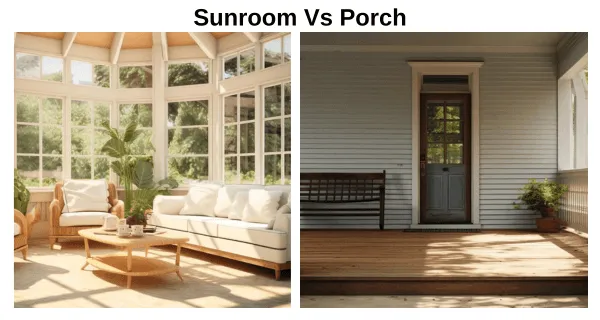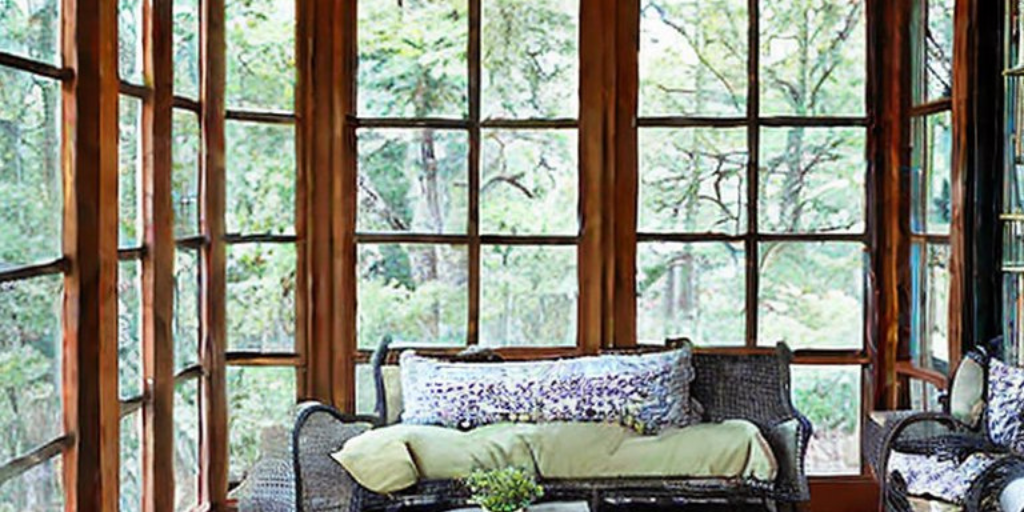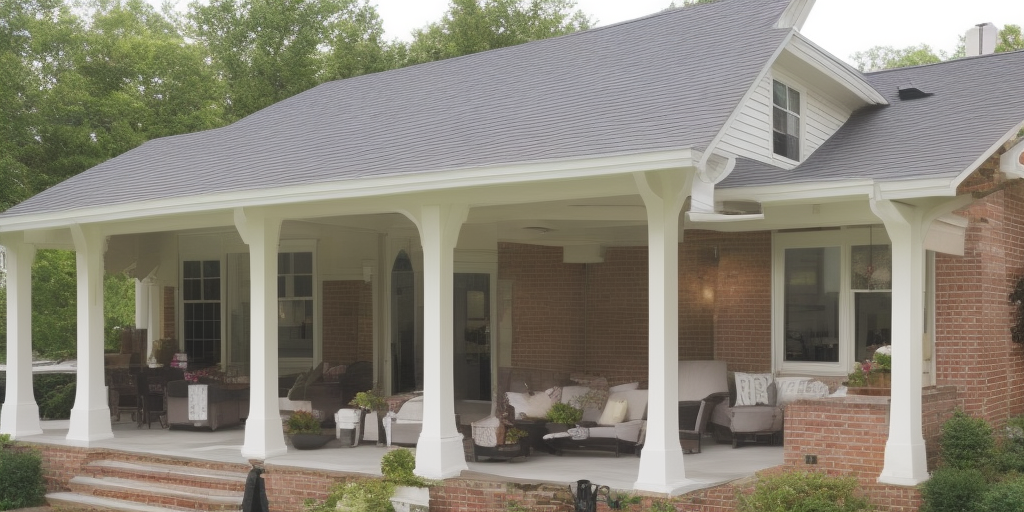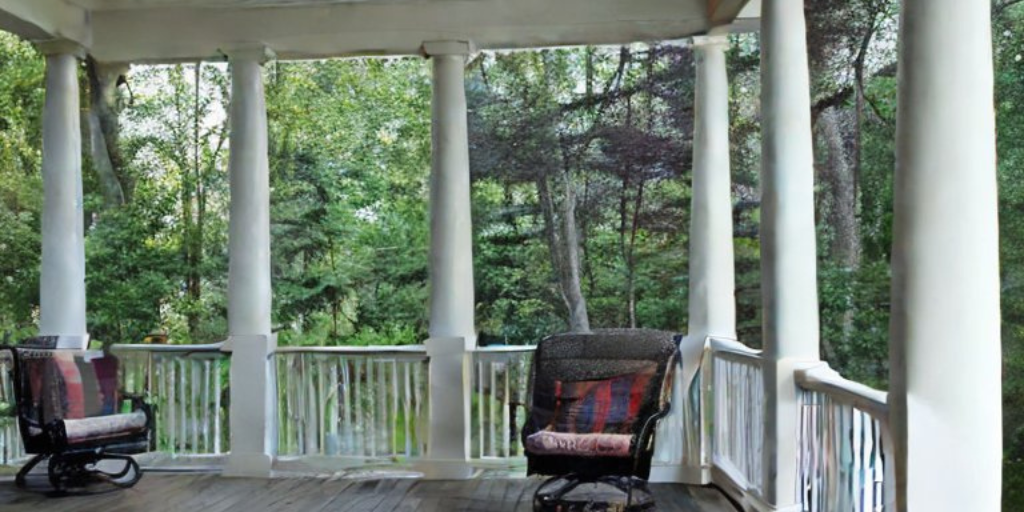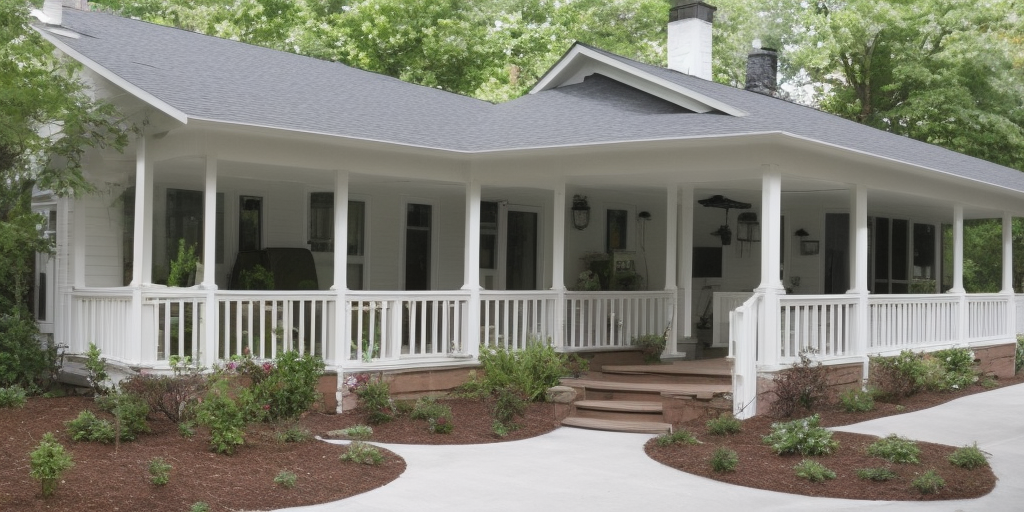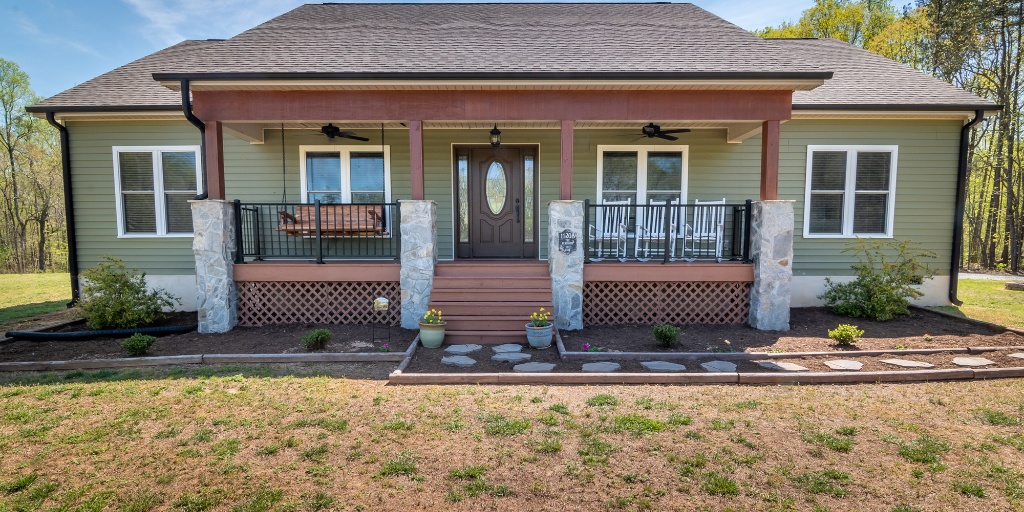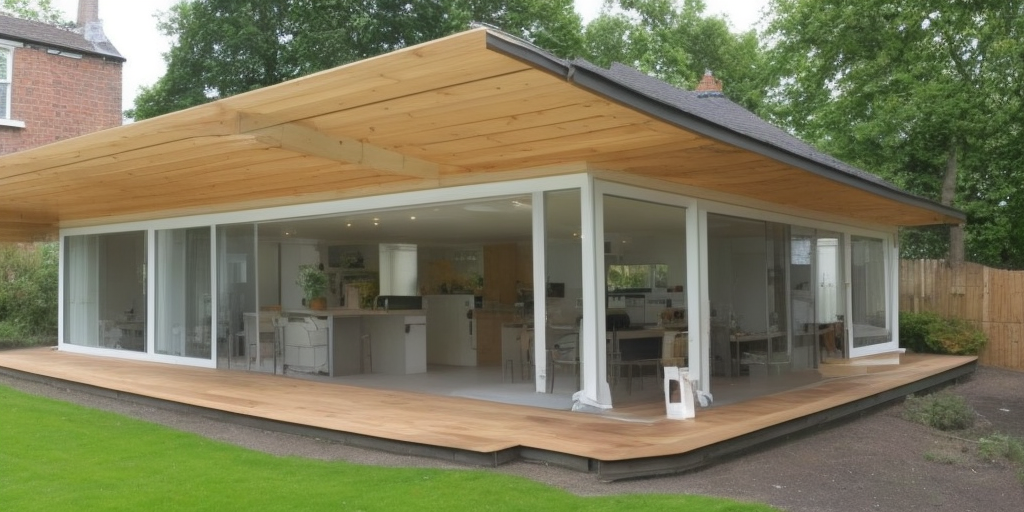Ah, the perennial debate among homeowners: sunroom vs porch? Both beckon with the promise of leisure, relaxation, and a touch of the outdoors without leaving the comfort of your home. But while they share a few commonalities, sunrooms and porches are distinctly different in their design, purpose, and benefits.
If you find yourself at the crossroads, pondering whether to bask in the enclosed luminance of a sunroom or relish the open serenity of a porch, you’re not alone. Understanding the nuances between the two can be the key to making an informed decision that aligns with your lifestyle, aesthetics, and budget. So, buckle up as we delve into the world of sunrooms and porches, breaking down their characteristics to help you decide which suits your abode the best.
What is a Sunroom?
Contents
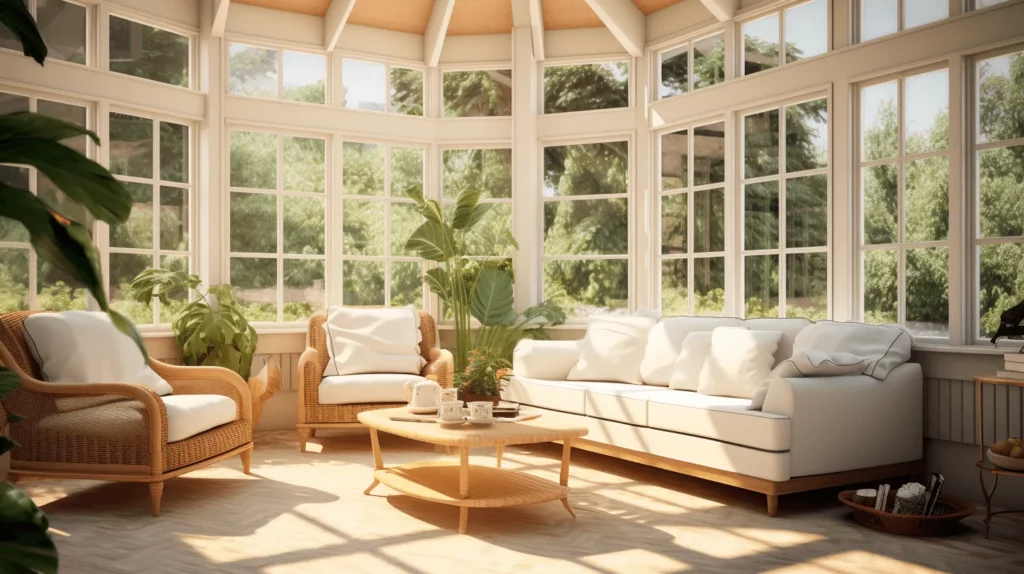

A sunroom, often reminiscent of a luminous sanctuary, is an enclosed space attached to the home, designed to bathe the interiors with ample natural light. Most distinctive for its large windows or glass panels, a sunroom becomes an intermediate space between the indoors and the outdoors. It’s not just a room; it’s a bridge to nature, providing panoramic views of the surrounding environment while shielding you from adverse weather conditions.
But wait, there’s more! Sunrooms wear many hats. They can be termed as “solariums” when they boast glass roofs, allowing sunlight to filter from above. Then there are “conservatories,” which owe their lineage to Victorian-era England. These spaces often have an ornate design, complete with a glass roof and walls, serving both as a greenhouse and a living space.
Whether you fancy sipping your morning coffee while watching raindrops race down the glass panels or desire a well-lit space for your indoor plants to thrive, a sunroom can cater to these whims and much more.
Benefits of a Sunroom
Stepping into a sunroom feels like a gentle embrace by nature. But beyond the immediate allure, there are several advantages to adding a sunroom to your home:
- Year-round Use: One of the primary perks of a sunroom is its adaptability to all seasons. Thanks to climate control and insulated windows, you can enjoy the views of a snowy winter landscape or a rainy spring morning, all while staying snug and warm indoors.
- Increased Home Value: A well-constructed sunroom can boost your property’s resale value. It adds functional square footage to your living space, making it an attractive feature for potential buyers.
- Flooded with Natural Light: The extensive use of glass panels ensures a bounty of natural light, ideal for reading, painting, or simply lounging. Plus, it’s a boon for those with indoor plants, providing ample sunlight for them to flourish.
- Energy Efficiency: Modern sunrooms are designed with energy efficiency in mind. With the right kind of insulated glass, sunrooms can trap heat during winters and keep the space cool during summers, reducing reliance on heating or air conditioning.
- Versatile Space: A sunroom can be whatever you want it to be – a dining area, a lounge, a home office, or even a playroom for kids. Its versatility allows homeowners to tailor the space according to their needs.
- Closer to Nature, Minus the Pests: Love the outdoors but not the bugs? A sunroom lets you enjoy panoramic outdoor views without the annoyance of mosquitos, flies, or other pests.
In essence, a sunroom is more than just an architectural addition; it’s a lifestyle enhancement, offering a unique blend of nature and comfort right in your home.
Considerations for Sunrooms
While sunrooms indeed come with a plethora of benefits, there are certain considerations to keep in mind before diving into the installation process:
Cost and Investment: Constructing a sunroom is a significant financial undertaking. Depending on the design, materials, and customization, the expenses can vary widely. It’s essential to factor in not just the immediate costs, but also potential long-term maintenance or energy bills.
Building Permits: Depending on where you live, you might require specific permits to construct a sunroom. It’s crucial to check local regulations and ensure you’re compliant to avoid any future complications.
Heating and Cooling Considerations: Given their extensive use of glass, sunrooms can become exceptionally hot in summer and cold in winter. Think about the type of glass, its insulating properties, and whether you’d need to extend your home’s HVAC system to the sunroom.
Positioning: The direction your sunroom faces can have a significant impact on its light and temperature. For instance, a south-facing sunroom will receive more sunlight, which is ideal in colder climates but could make the room too hot in warmer regions.
Maintenance: Glass requires regular cleaning, especially if you live in an area prone to dust or have trees nearby. Additionally, you’d want to ensure the seals remain tight and that there’s no leakage during rains.
Customization: While having myriad options for customization is excellent, it can also be overwhelming. Decide early on if you want features like retractable shades, ceiling fans, or even built-in speakers.
Furniture and Decor: Due to the sunroom’s exposure to sunlight, certain materials, especially some fabrics, might fade over time. When furnishing your sunroom, consider UV-resistant fabrics and materials.
What is a Porch?


Ah, the timeless allure of a porch! When one thinks of a porch, it often evokes images of lazy summer afternoons, rocking chairs, and a chilled glass of lemonade in hand. A porch is an open structure, usually attached to the front or back of a house. It serves as a transitional space between the indoors and the outdoors, letting you experience the open air while still being connected to your home.
Porches come in various styles and flavors:
Front Porch: Often seen in classic American homes, the front porch is a welcoming space, creating an inviting facade and offering a spot to socialize with neighbors or watch the world go by.
Back Porch: More private than its front-facing counterpart, the back porch is typically reserved for family gatherings, barbecues, or some tranquil alone time with a good book. Whether you’re catching the first rays of the morning sun, listening to the chorus of evening crickets, or simply taking a breather from the indoors, a porch is a quintessential home feature that celebrates outdoor living.
Veranda: Spanning the length or wrapping around a house, a veranda is a large, roofed porch that offers ample space for relaxation and entertainment.
Deck: While some might argue that a deck is its own entity, it shares many porch qualities. Typically elevated and made of wood or composite material, decks are perfect for sunbathing, outdoor dining, or stargazing.
Screened Porch: Marrying the best of both worlds, a screened porch keeps out pesky bugs while letting you enjoy the breeze and views.
Benefits of a Porch
Beyond the poetic allure of sunset views and a gentle breeze, porches offer tangible benefits that can enrich your living experience. Here’s why many homeowners cherish their porches:
Outdoor Enjoyment with Shelter: Porches provide a shaded area, allowing you to enjoy the outdoors without the direct brunt of the sun or a sudden drizzle. Whether it’s sipping on a hot beverage during a cool evening or watching kids play in the yard, porches offer a front-row seat to life’s simple pleasures.
Enhances Architectural Style: A well-designed porch can significantly elevate a home’s curb appeal. Depending on its design – be it colonial, Victorian, or contemporary – a porch can serve as an architectural statement.
Potential for Increasing Home’s Resale Value: A functional and aesthetically pleasing porch can add to the resale value of your home. Potential buyers often visualize themselves in the space, and a beautiful porch can be a selling point.
Natural Ventilation: Given their open structure, porches allow for natural ventilation, offering a space to relax without the confines of walls and promoting air circulation within the home.
Extension of Living Space: With the right furniture and decor, your porch can become an additional living area for dining, entertaining, or simply lounging.
Protection from Elements: Porches, especially those that are covered, protect your home’s main entrances from rain, snow, and direct sunlight, extending the life of doors and front-facing windows.
Community Connection: Front porches, in particular, can foster a sense of community. They serve as a platform to wave at neighbors, have impromptu chats, and stay connected with the neighborhood’s pulse.
A porch isn’t just an architectural appendage; it’s a space that seamlessly marries indoor comfort with the beauty of the outdoors. It’s no wonder that for many, it becomes the soul of their home, brimming with memories and moments.
Considerations for Porches
While porches indeed bring charm and functionality to a home, there are a few considerations to keep in mind if you’re planning on adding or renovating one:
Location and Orientation: The position of your porch matters. A south-facing porch might get more sun, which is ideal for colder regions but could be overly warm in hotter climates. Meanwhile, a north-facing porch might remain cooler but could miss out on the warmth of the direct sunlight.
Materials: Porches can be constructed using various materials, from wood to brick to composite materials. Each has its pros and cons concerning aesthetics, durability, maintenance, and cost.
Weather Protection: Depending on your region, consider factors like snow load, rain, or direct sunlight. You might want to invest in weather-resistant materials or even consider installing overhead fans or heaters to use the porch year-round.
Screening: If you live in an area with many insects, a screened porch might be worth considering. It offers the advantage of enjoying the breeze without the company of bugs.
Safety and Accessibility: If your porch is elevated, ensure that you have sturdy railings. Also, consider accessibility, especially if you have elderly family members or guests. Ramps or wider steps can be beneficial.
Furnishing and Décor: Outdoor furniture and décor need to withstand the elements. Invest in quality, weather-resistant furniture and consider storage options for cushions during adverse weather.
Building Regulations: As with any structural addition to your home, it’s crucial to be aware of local building codes and regulations. You might need a permit before construction or need to ensure your porch meets certain safety standards.
Maintenance: Regular maintenance can extend your porch’s lifespan. This includes sealing or staining wooden porches, checking for cracks or structural issues, and ensuring that there’s no water pooling or drainage issues.
Privacy: If your house is close to a neighbor or a busy street, consider how you might want to address privacy concerns. This could mean adding taller railings, privacy screens, or even strategically placed plants.
By being mindful of these considerations, you can ensure your porch remains a cherished extension of your home, offering years of enjoyment, relaxation, and cherished memories.
Sunroom Vs Porch: Making the Right Choice for Your Home
Choosing between a sunroom and a porch might seem like a matter of mere aesthetics, but the decision goes deeper than that. Both offer unique experiences, and your choice should align with your lifestyle, preferences, and the functionality you desire. Let’s pit the two against each other in a friendly comparison:
- Functionality and Use:
- Sunroom: Enclosed by windows, sunrooms offer a controlled environment. They can be used year-round, irrespective of external weather conditions. They’re ideal for those who want a space that feels outdoorsy yet is insulated from the extremes.
- Porch: Being open, porches are more subjected to the elements. They’re perfect for those who crave genuine outdoor experiences – feeling the breeze, hearing the birds, and soaking up the sun (or moonlight).
- Cost and Investment:
- Sunroom: Typically, sunrooms can be more expensive because of the need for insulation, windows, and sometimes heating or cooling systems. However, they can also add more value to a home in terms of functional square footage.
- Porch: Generally less expensive than sunrooms, porches might not offer the same return on investment in terms of resale value, but they’re easier and quicker to construct.
- Aesthetic Impact:
- Sunroom: Acts as a seamless extension of your home, offering panoramic views of the outside. It can be tailored to match your home’s architectural style precisely.
- Porch: Offers a more traditional and classic appeal. Whether it’s the rustic charm of wooden railings or the vintage allure of a swinging bench, porches evoke nostalgia and timeless elegance.
- Maintenance:
- Sunroom: Requires regular cleaning of windows and might need more frequent checks for seals or insulation issues.
- Porch: Exposed to the elements, it may need periodic staining or sealing, especially if made of wood. Also, it’s open, so less cleaning is required compared to a sunroom.
- Flexibility:
- Sunroom: Offers flexibility in terms of interior décor and can be used as an additional living room, play area, office space, or even a dining area.
- Porch: While it offers some flexibility, the choices are more oriented towards outdoor-friendly furniture and décor.
- Connection to Nature:
- Sunroom: Provides an immersive experience with nature without direct exposure. You get the views without the bugs or the weather extremes.
- Porch: Offers a direct connection. There’s no barrier to the sounds, scents, and sensations of the outdoors.
The decision between a sunroom and a porch depends on what you value more: a controlled, versatile environment or an authentic, direct experience of the outdoors. Consider your home’s architecture, your budget, and most importantly, how you envision yourself spending time in these spaces. Whether it’s the enclosed charm of a sunroom or the open embrace of a porch, both promise countless moments of relaxation and joy.
Factors to Consider Before Deciding
So, you’ve weighed the pros and cons, understood the differences, and possibly visualized how each space might look. However, before you dive into the decision-making process, here are a few more factors to ponder:
- Climate:
- If you live in an area with extreme weather conditions – be it harsh winters or sweltering summers – a sunroom might provide more utility as it allows year-round use.
- If your locale enjoys moderate weather most of the year, a porch can let you maximize the outdoor feel without the need for the controlled environment of a sunroom.
- Purpose:
- Do you want a space primarily for relaxation, or are you looking for additional functional space? A sunroom can serve as an office, a playroom, or even a guest room, while a porch is generally a place to unwind and enjoy the outdoors.
- Budget:
- Financial considerations are always pivotal. While both sunrooms and porches are valuable additions, sunrooms often require a more substantial investment not only in construction but also in maintenance.
- Space Availability:
- The available space in your property might dictate your choice. Sunrooms generally need a larger footprint, especially if you’re looking to create a multifunctional space. Porches, on the other hand, can be more flexible in size.
- Long-term Goals:
- If you’re planning to sell your house in the foreseeable future, think about the potential return on investment. While both additions can boost the appeal of your property, a sunroom might add more in terms of square footage and overall home value.
- Personal Lifestyle:
- Are you someone who loves gardening or outdoor activities? A porch might suit you better. If you lean more towards cozy indoor activities but still want a feel of the outdoors, a sunroom could be your haven.
- Integration with Home:
- How do you want this new space to blend with your existing home? Sunrooms can often feel like a natural extension of your indoor space, while porches have a distinct boundary between indoor and outdoor.
- Maintenance Commitment:
- Are you ready for the upkeep that each option demands? As discussed, sunrooms might require regular cleaning of windows and maintenance of insulation, while porches will need protection from the elements.
- Privacy Needs:
- If privacy is a major concern, a sunroom with tinted windows or curtains might offer more seclusion compared to a porch, especially in tightly packed neighborhoods.
By considering these factors, you can ensure that your choice between a sunroom and a porch aligns not just with your aesthetic preferences but also with your lifestyle, budget, and long-term plans.
The Verdict on Sunroom Vs Porch
The sunroom vs. porch debate doesn’t have a one-size-fits-all answer. Instead, the best choice is intrinsically tied to individual preferences, needs, and circumstances. However, by examining both options holistically, you can make an informed decision that augments your home’s charm and functionality.
Recap and Key Takeaways:
- Sunrooms: Enclosed spaces surrounded by windows, these rooms bring the outdoors in. They offer a controlled environment, allowing for year-round use, making them ideal for areas with extreme weather conditions. They can serve various purposes, from a reading nook to an extended dining space. However, they do come with a higher price tag, both in terms of construction and maintenance.
- Porches: These are open structures attached to the house, offering a direct connection with the outdoors. They encapsulate the essence of nature, from feeling the early morning dew to listening to the evening crickets. While they may not provide the same year-round functionality as sunrooms, their raw, unfiltered charm can be immensely appealing.
Final Thoughts: Sunroom Vs Porch
Your home is a reflection of your personality, values, and lifestyle. Whether you opt for a sunroom or a porch, the most important thing is that it resonates with you and enhances your quality of life. Consult with architectural and interior design professionals, discuss with family members, and visualize your daily life in these spaces.
In the end, whether you’re basking in the sunlit warmth of a sunroom or sipping tea on a breezy porch, the goal is simple: to create a space that fosters relaxation, joy, and countless cherished memories.
Thank you for joining us on this exploration of sunrooms and porches. We hope this guide aids you in crafting a home that’s not just a place to live, but a haven that truly feels like ‘you’.
